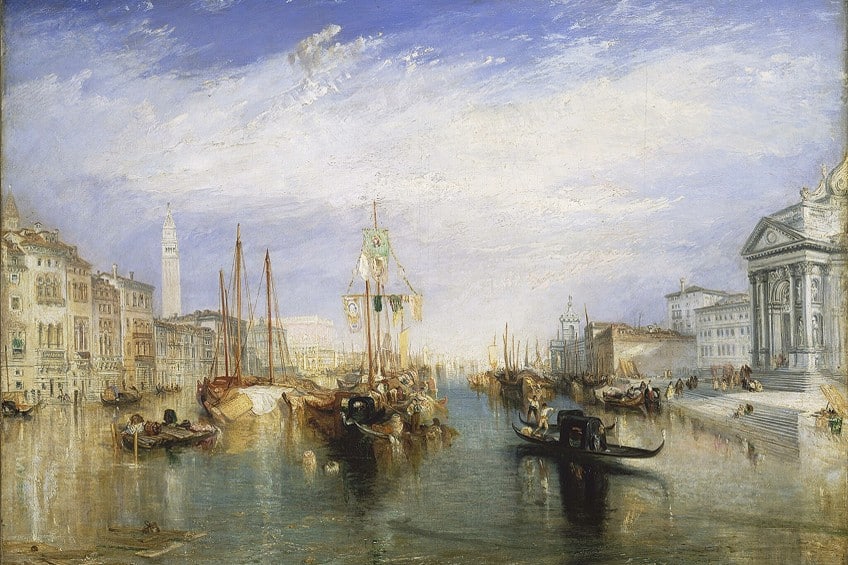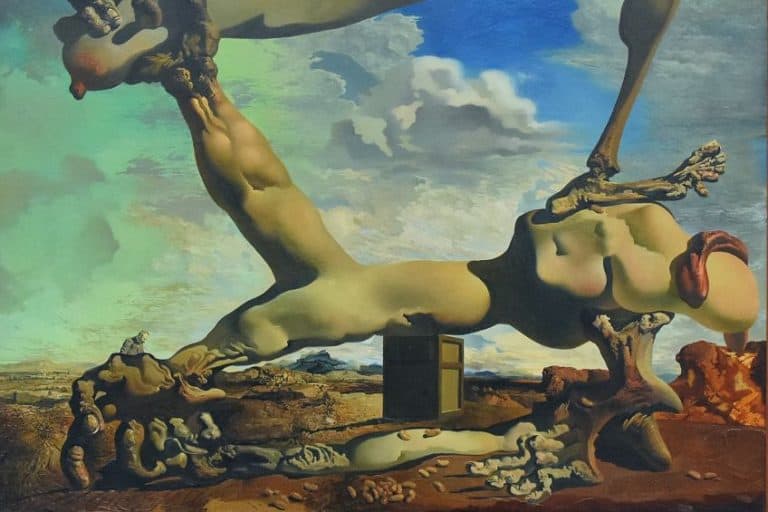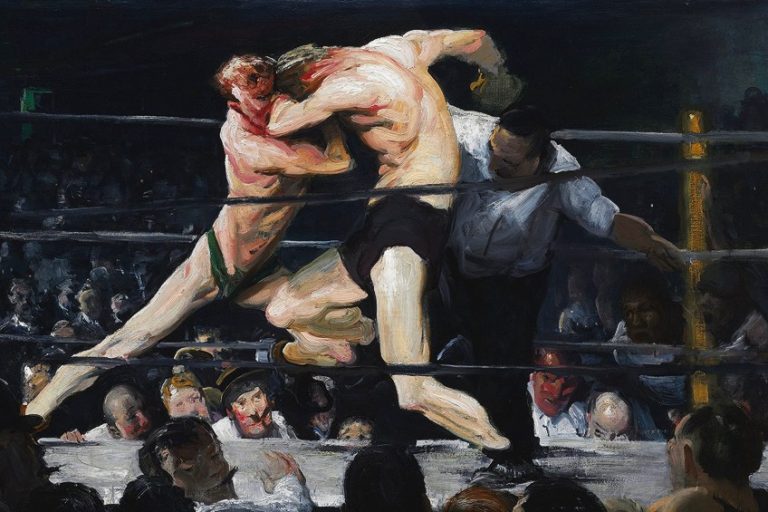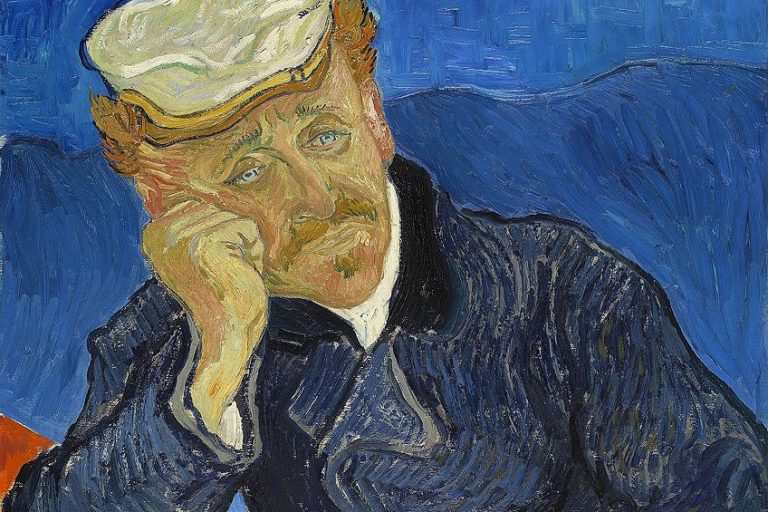Famous Paintings in Venice – Our Top Ten Venetian Paintings
You might be thinking of visiting Venice in person, or simply want to learn more about Venice’s art. The art in Venice is world-renowned due to the abundance of talent to be found in Venice’s artists of bygone ages. With such a smorgasbord of Venetian paintings to choose from, you might find this list of famous paintings in Venice helpful when deciding which works to view and explore. Join us as we examine the most famous paintings in Venice!
Famous Paintings in Venice
Venice has long been acclaimed for its centuries-long cultural legacy and contributions to the world of art. The proficiency of technique, application of light and color, and ability to depict the captivating beauty of Venice by Venetian artists of the age of the Renaissance, particularly, has left an everlasting impression on the world of art.
Throughout history, Venice has functioned as a source of inspiration for innumerable painters.
These works, made by both famous and unknown artists, continue to enchant audiences all around the world. Every painting in Venice has a unique history and story, and below, we shall explore the most famous paintings in Venice that have continued to capture the imaginations and hearts of thousands of visitors to this city.
Portrait of Doge Leonardo Loredan (1501) by Giovanni Bellini
| Artist | Giovanni Bellini (1430 – 1516) |
| Date Completed | 1501 |
| Medium | Oil on panel |
| Dimensions (cm) | 62 x 45 |
| Location | The National Gallery, London, United Kingdom |
Giovanni Bellini’s official depiction of Venice’s strong but dissatisfied leader is a classic example of Venetian portrait painting. He is seen wearing his formal headpiece, a corno ducale placed over a linen cap, as well as his ceremonial silk robe with decorative buttons. The Latin form of Bellini’s name is painted on the illusionistic sheet of paper that runs across the bottom of the artwork. Venice was regarded as the world’s richest city and the second-largest city in Europe after Paris at the time this painting in Venice was produced.
He portrays a traditional, confident pose for the Doge, lending him the gravitas found in Roman Emperors and the like.
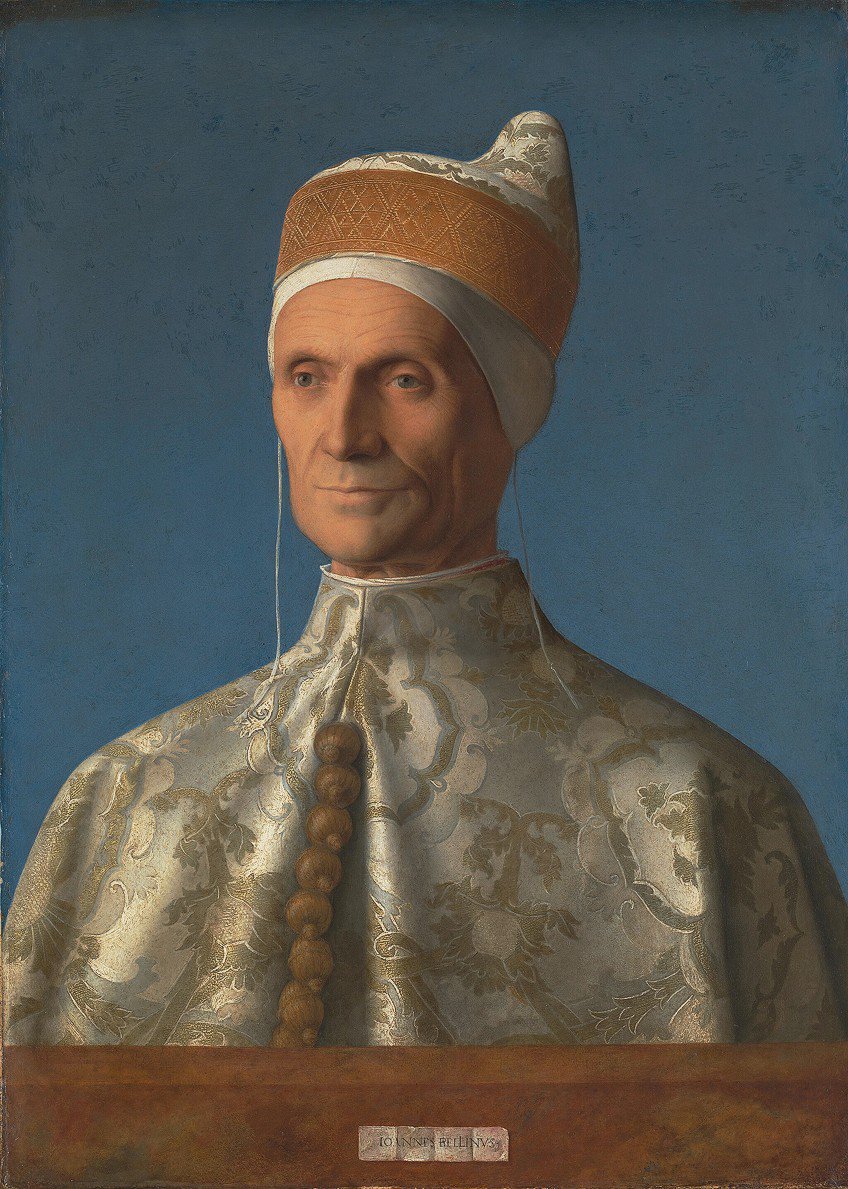
His face is rendered very realistically, and Bellini faces him toward the light, revealing traces of stubble and a variety of facial wrinkles. The color and angle of the light shining on the Doge’s face indicate that the sun is low in the sky, implying a late afternoon or early evening period. The sense of time passing, together with Loredan’s age, might refer to the metaphorical contrast between the length of a day and the average length of a human life.
The Tempest (1508) by Giorgione
| Artist | Giorgione (1477 – 1510) |
| Date Completed | 1508 |
| Medium | Oil on canvas |
| Dimensions (cm) | 83 x 73 |
| Location | Gallerie dell’Accademia, Venice, Italy |
Giorgione’s renown as a crucial figure in the art in Venice during the High Renaissance is based mostly on his cryptic, lyrical works such as this famous Venetian painting, The Tempest. Although it is a landscape painting, it also incorporates figures and a number of illusions. The Tempest, supposedly requested by Gabriele Vendramin, a Venetian nobleman, is one of the earliest works in which landscape dominates, notwithstanding allegorical themes.
A nude lady sits on a tiny bluff overlooking a small river stream in the foreground. She has a baby on her breast. She utilizes her thigh to provide additional protection and cover for the child.
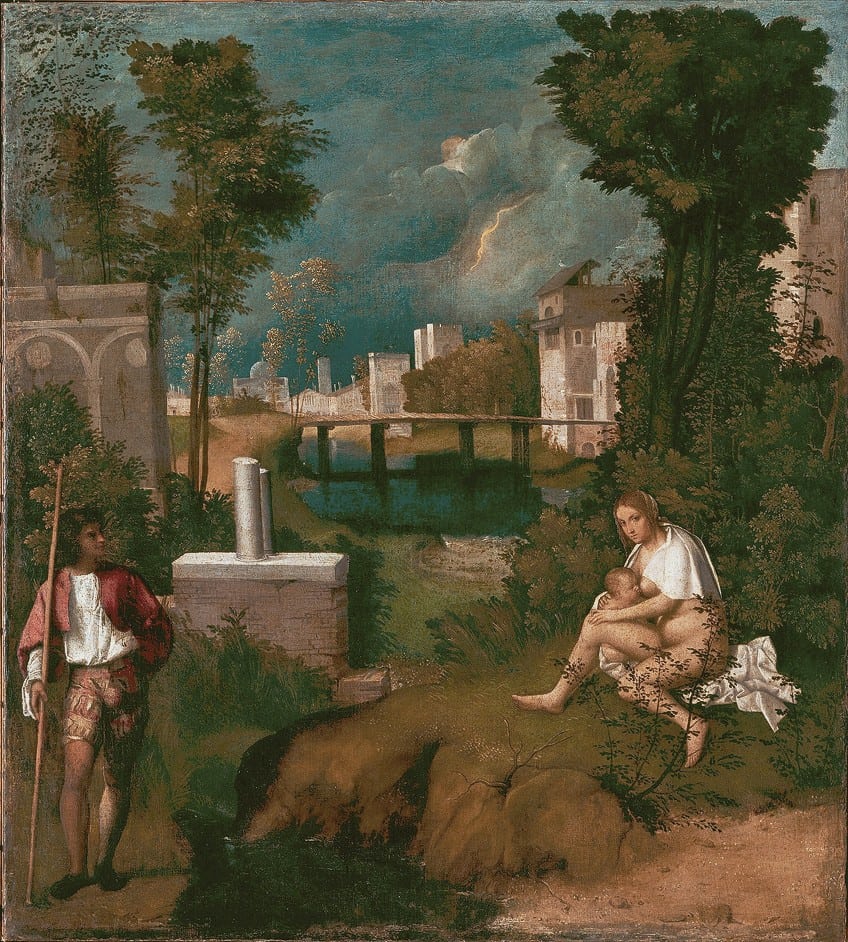
On the other side of the creek, a well-dressed young person with a stick has come to a halt and is staring at the woman. He is smiling at her, but she is staring at the viewer rather than at the man. A stub of masonry with two shattered pillars stands behind the two individuals. There is, as yet, no agreement on their importance or meaning. A storm is brewing in the sky above the city of Venice. Lightning can be seen, and Giorgone’s dramatic use of aquamarine and other green and blue tones – painted with Da Vinci’s sfumato technique – produces an overall sense of impending doom.
Assumption of the Virgin (1518) by Titian
| Artist | Titian (1490 – 1576) |
| Date Completed | 1518 |
| Medium | Oil on panel |
| Dimensions (cm) | 690 x 360 |
| Location | Basilica S.Maria Gloriosa dei Frari, Venice, Italy |
This artwork exemplifies Titian’s preference for vibrant colors with luminous aspects in the early stages of his career. Later in life, though, his approach changed to favor softer color variations and more realistic shadowing. Titian’s paints contained linseed oil and gum turpentine, among other unknown components. Titian’s brush strokes were densely colored in order to make a strong visual effect on the observer.
The painting’s arrangement is intended to lead the viewer’s eye upwards in a pyramid formation, starting with the red-robed apostles at the bottom, then to Mary’s red clothing, and eventually to God’s red tunic at the top.
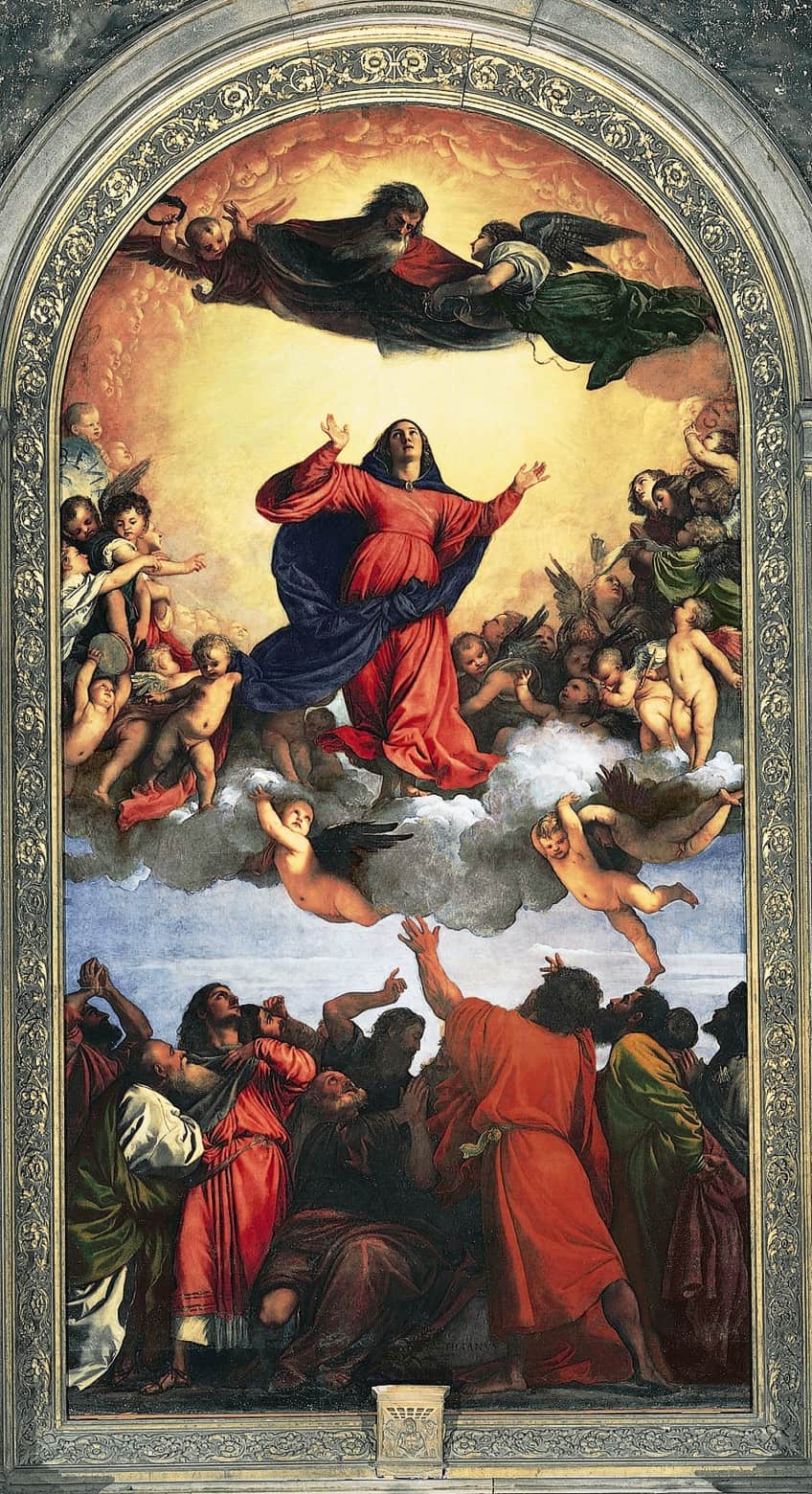
This oil painting represents the divine raising of Jesus’ mother, Mary, into heaven in bright, clashing colors. The apostles bid her farewell on the earth below, reaching up to Mary’s figure as it is hoisted up by celestial cherubs amidst the clouds. From the brilliant light of heaven, the older male image of God glances down at Mary, as an angel beside him brings a crown to gift to Mary. The artwork is regarded to be the most famous artwork of Mary’s assumption ever made.
The Feast in the House of Levi (1573) by Paolo Veronese
| Artist | Paolo Veronese (1528 – 1588) |
| Date Completed | 1573 |
| Medium | Oil on canvas |
| Dimensions (cm) | 50 x 130 |
| Location | Gallerie dell’Accademia, Venice, Italy |
Paolo Veronese originated from the city of Venice and spent much of his lifetime there during the Italian Renaissance. Due to the fact that his artworks depicted holy people and settings from the Biblical New Testament, he is sometimes likened to the most important members of the Renaissance movement, such as Michelangelo or Da Vinci.
The work of art, widely regarded as one of Veronese’s most famous, was completed in 1573, during an era when many other artists were striving to gain recognition by depicting scenes from the Bible.

When it was first displayed, the artwork, which portrays a scene of Jesus and his disciples, was viewed as being quite divisive. The artist was brought before a court and accused of heresy because he painted certain individuals in this Venetian painting.
Last Supper (1594) by Tintoretto
| Artist | Tintoretto (1518 – 1594) |
| Date Completed | 1594 |
| Medium | Oil on canvas |
| Dimensions (cm) | 365 x 568 |
| Location | Church of San Giorgio Maggiore, Venice, Italy |
This Venetian painting, housed in the prominent Benedictine monastery church of San Giorgio Maggiore, represents the artist’s legacy, the culmination of a subject whose thematic and formal concepts he developed for over half a century. This magnificent canvas was most likely commissioned by the monastery’s abbot Michele Alabardi and still hangs on the side walls of the presbytery.
This work marks a significant departure from traditional renderings of the topic in which Christ’s table normally aligns with the picture plane.
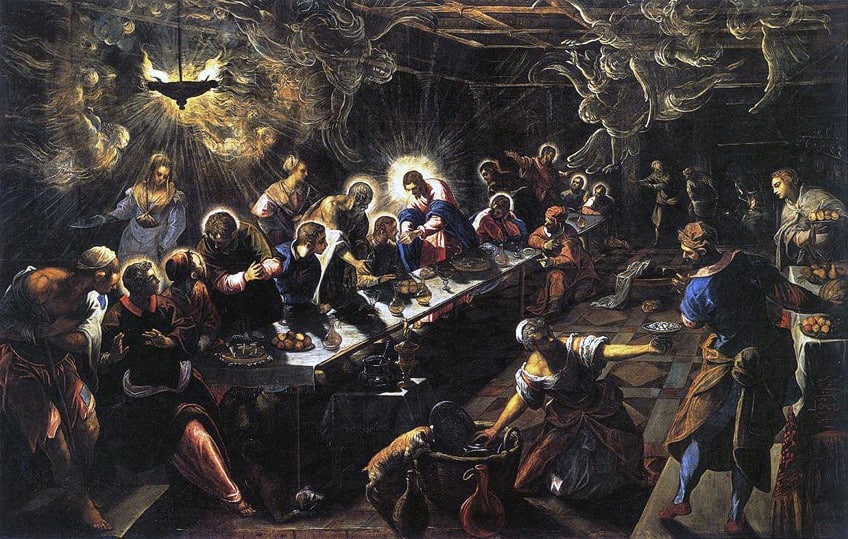
The diagonal angle of the composition seems to be clearly influenced by the congregation’s point of view, which would be seated to the right of the painting and would view the foreshortened table as an extension of the altar. Recent scholarship suggests that Tintoretto was primarily responsible for the composition, but the actual brushwork is now credited to his son Domenico or perhaps his assistants. Nevertheless, this painting remains one of Tintoretto’s most creative and visionary artworks, with its non-material, whirling heavenly forms encapsulating the continual marvel of transubstantiation.
Piazza San Marco (1756) by Canaletto
| Artist | Canaletto (1697 – 1768) |
| Date Completed | 1756 |
| Medium | Oil on canvas |
| Dimensions (cm) | 46 x 38 |
| Location | The National Gallery, London, United Kingdom |
In this painting of Venice, we can observe the Piazza San Marco from just within the Procuratie Nuove colonnade, which contained the procurators of San Marco. The artist took liberties with the building in order to establish a dramatic composition, expanding the size of the archway and eliminating one of the pillars so we can view both the piazza in addition to the arcade. A dog sits attentively at the feet of two men who recline back against an archway in front of the viewer. Another man, wearing a bright green cloak and holding a saucer and cup, appears to be listening in. Behind him is the well-known coffee shop Caffè Florian, from which his beverage most likely came from.
Canaletto integrated optical illusions, arranging the vertical lines of certain architectural components – the arch’s pillar and the column on its outer border, for instance, with the bell tower beyond – to produce an unexpected and intriguing composition.
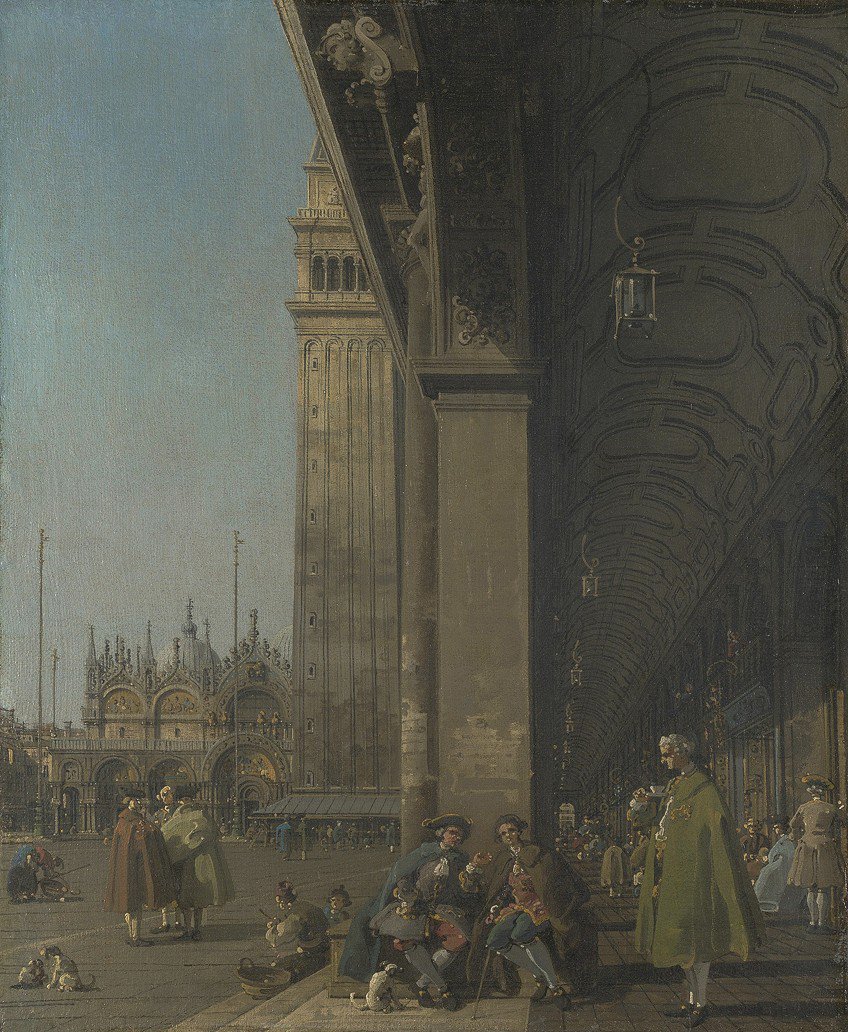
During his mature phase, he adopted a more somber color palette and deeper tone, and he preferred to work on small canvases. These smaller Venetian paintings would have been more inexpensive and simpler to transport, which would have appealed to tourists and collectors in Venice.
Venice, from the Porch of Madonna della Salute (1835) by J. M. W. Turner
| Artist | J. M. W. Turner (1775 – 1851) |
| Date Completed | 1835 |
| Medium | Oil on canvas |
| Dimensions (cm) | 36 x 48 |
| Location | Metropolitan Museum of Art, New York City, United States |
Turner is widely regarded as one of the most famous English artists, with paintings depicting towns and landscapes from all around Europe and the rest of the world. He is regarded as one of the most acclaimed Romantic artists, and many of his paintings are considered brilliant depictions of a certain cityscape or environment.
Turner completed a painting of a well-known portion of Venice that is part of the Grand Canal in 1835. In this painting of Venice, he depicts a view of the canal from the Madonna della Salute’s exterior stairs or porch.

It was among Turner’s notable marine paintings, completed shortly after the artist’s visit to the famed city a few years before. Turner used his extensive expertise as a marine artist and the brilliance of his watercolor technique to produce this image, in which the foundations of Venice’s palaces melt into the waters of the lagoon through exquisite reflections.
The Grand Canal of Venice (1875) by Édouard Manet
| Artist | Édouard Manet (1832 – 1883) |
| Date Completed | 1875 |
| Medium | Oil on canvas |
| Dimensions (cm) | 54 x 65 |
| Location | Shelburne Museum, Shelburne, United States |
Édouard Manet, another important member of the Impressionist style, painted a major portrayal of Venice’s Grand Canal. The artist spent a lot of time in the city during the late 19th century when its Grand Canal was famed for transporting people from one end of the city to the other.
Manet made one of the most famous Venetian paintings of this canal, which depicts a traghetto, a tiny ferry boat rowed by an oarsman.

Manet’s representation of the Grand Canal is more of a recreation of the famed traghetti than a painting of the canal as a whole. This picture and the scene it represents are more or less a familiar motif for Venice since these traghetti ferry boats are a unique means of transportation that is exclusively utilized in Venice. Manet was well-known for his ability to convey a feeling of movement in his works of art, and this is a prime illustration of his technique.
Entrance to the Grand Canal, Venice (1905) by Paul Signac
| Artist | Paul Signac (1863 – 1935) |
| Date Completed | 1905 |
| Medium | Oil on canvas |
| Dimensions (cm) | 74 x 92 |
| Location | Toledo Museum of Art, Ohio, United States |
French artist Paul Signac worked and lived in the late 19th century when the Impressionist movement was coming to an end and artists were looking for new directions to pursue. Signac is one of the most famous artists who specialized in cityscapes and landscapes.
After visiting Venice and other regions of Italy, Signac painted one of his most well-known artworks in 1905.

This famous artwork from Venice depicts the Dogana da Mar and the Santa Maria della Salute, two of Venice’s most iconic sites. He was a well-known Pointillism artist, and this work was an excellent depiction of this style of making artwork with paint.
Le Grand Canal (1908) by Claude Monet
| Artist | Claude Monet (1840 – 1926) |
| Date Completed | 1908 |
| Medium | Oil on canvas |
| Dimensions (cm) | 92 x 73 |
| Location | Museum of Fine Arts, Boston, United States |
Claude Monet is widely regarded as the key figure of the Impressionist movement, which originated in France during the 19th century period and continues to be regarded as one of the most acclaimed painters of all time. Many of his artworks are regarded as masterpieces that exhibit the most vital characteristics of Impressionist art, particularly those depicting various towns and landscapes.
“Le Grand Canal”, one of Monet’s most well-known cityscape artworks, was produced in 1908, near the close of a period in which the artist had created several landscape and cityscape paintings in the Impressionist style.

This artwork is one of the most famous portrayals of Venice’s Grand Canal, which is a significant water corridor that links to the city’s other waterways. Venice is well-known for its water corridors, and the importance of these transport and commercial routes was especially important in the late 1800s and early 1900s. It represents a vista from the well-known Palazzo Barbaro, and the artist is known to have done numerous paintings of this precise perspective and composition.
That concludes our list of famous paintings in Venice. Known as the “floating city”, this renowned region is lauded worldwide for its incredible artwork. Venice’s art has for many centuries been collected and appreciated by people over the centuries. Venice’s artists were very inspired by the city’s rich culture and artistic influences from around the world. In many instances, they did not just follow the art trends of the period, but also pioneered them. Which of these Venetian paintings did you find the most visually appealing?
Frequently Asked Questions
What Is Special About Art in Venice?
During the Middle Ages and the Renaissance, Venice was a strong and prosperous maritime republic. Because of its advantageous location as a key trading hub between Asia and Europe, the city amassed enormous riches. This affluence enabled patrons like wealthy merchants and the governing class to commission and fund outstanding painters. During the Renaissance, Venice enjoyed a thriving art culture that drew artists from all across Italy and Europe. Tintoretto, Titian, and Veronese were all headquartered in Venice and created some of their most famous works there. Venice had its own distinct art styles and schools that distinguished it from other Italian towns. The Venetian School, which is recognized for its focus on light, color, and atmospheric effects, helped enhance oil painting methods and had a significant impact on the world of art.
Why Do Artists Like Painting in Venice?
Venice’s gorgeous landscapes, lovely canals, and breathtaking architecture present painters with a visually appealing and ever-changing environment. The interaction of light and water produces a one-of-a-kind ambiance that has long captivated painters. Venice’s light is known for its gentleness and ability to convey a sense of a charming atmosphere. The city’s reflection on the lake, as well as its signature foggy mornings and beautiful sunsets, provide painters with a plethora of opportunities to play with shadow and light.
Isabella studied at the University of Cape Town in South Africa and graduated with a Bachelor of Arts majoring in English Literature & Language and Psychology. Throughout her undergraduate years, she took Art History as an additional subject and absolutely loved it. Building on from her art history knowledge that began in high school, art has always been a particular area of fascination for her. From learning about artworks previously unknown to her, or sharpening her existing understanding of specific works, the ability to continue learning within this interesting sphere excites her greatly.
Her focal points of interest in art history encompass profiling specific artists and art movements, as it is these areas where she is able to really dig deep into the rich narrative of the art world. Additionally, she particularly enjoys exploring the different artistic styles of the 20th century, as well as the important impact that female artists have had on the development of art history.
Learn more about Isabella Meyer and the Art in Context Team.
Cite this Article
Isabella, Meyer, “Famous Paintings in Venice – Our Top Ten Venetian Paintings.” Art in Context. August 29, 2023. URL: https://artincontext.org/famous-paintings-in-venice/
Meyer, I. (2023, 29 August). Famous Paintings in Venice – Our Top Ten Venetian Paintings. Art in Context. https://artincontext.org/famous-paintings-in-venice/
Meyer, Isabella. “Famous Paintings in Venice – Our Top Ten Venetian Paintings.” Art in Context, August 29, 2023. https://artincontext.org/famous-paintings-in-venice/.


